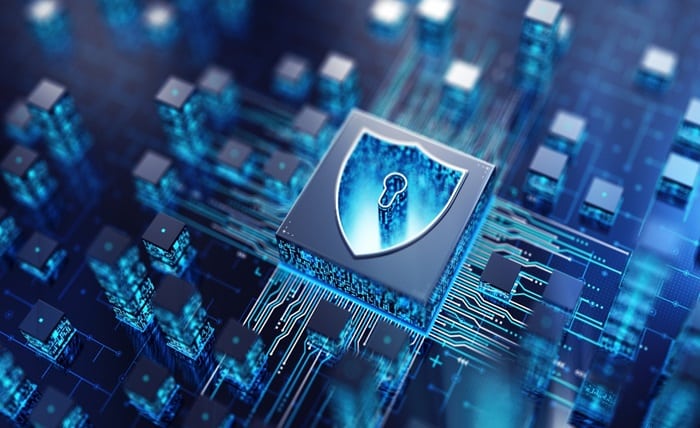6 Ways MDR Helps You Detect and Respond to Cyberattacks Faster

Cybercriminals are becoming more sophisticated as they use new approaches, methods, and techniques to gain network access. Because these threats are more complex, traditional security systems can lack the speed and accuracy required to prevent serious harm. Protecting sensitive data, ensuring operational continuity, and protecting an organization’s reputation all rely on rapid detection and response to attacks in the ever-changing landscape of cybersecurity. This article analyzes how MDR might improve a company’s capacity to promptly detect and address breaches.
Enhanced Threat Detection through Continuous Monitoring
MDR services are mostly notable for their capacity to offer ongoing monitoring of the IT environment of a company. Usually running with periodic scans, traditional security solutions allow threats to go undetectable for extended times before being discovered. Using a managed detection and response solution ensures that all endpoints, networks, and systems are continuously monitored, significantly lowering the probability of an attack being overlooked. MDR professionals can see aberrant behavior, attempts at illegal access, and indicators of harmful activity in real-time by use of ongoing monitoring. Quick identification of hazards enables companies to react before major damage results, so ensuring a faster reduction of possible hazards.
Utilizing Advanced Threat Intelligence for Faster Identification
MDR solutions use advanced threat intelligence to detect emerging threats far more efficiently than standard cybersecurity tools. These systems continuously compile and evaluate information from many sources, including previous attack records, threat feeds, and worldwide cybersecurity networks. Examining this data helps MDR services to present a more complete picture of the threat environment and enables them to spot trends and patterns suggesting a possible assault. Security teams can prioritize which risks to handle first depending on access to this important intelligence, therefore facilitating faster identification and more informed response.
Expert Analysis for Quicker Response and Mitigation
MDR offers one of the most important benefits: seasoned cybersecurity experts’ knowledge. These professionals have modern tools, but they also have the expertise and experience required to spot and react quickly to difficult threats. Many times, security teams inside companies would find it difficult to understand the enormous volumes of data produced by security systems, which would cause delays in threat identification and response. With MDR, however, skilled analysts can evaluate the matter right away, correctly analyze the facts, and decide on the best line of action. Their quick reaction reduces the interval between discovery and prevention, therefore neutralizing any possible hazards before they become more serious.
Automation of Threat Detection and Response
Automating the detection and response to cyber threats is another essential component of MDR. Reducing response times depends mostly on automation since it can set pre-defined actions upon detection of specific hazards. Automated algorithms built into MDR platforms, can separate a hacked endpoint from the network to stop the assault from spreading. Automated reactions can call for quarantining compromised files, blocking dubious IP addresses, or perhaps starting a system reboot to eliminate any harmful code.
Advanced Analytics for Real-Time Threat Assessment
MDR solutions use powerful analytics to deliver real-time information about security occurrences. These systems can find possible hazards depending on sophisticated algorithms and machine learning approaches by always evaluating data from several sources. Faster identification of possible hazards is made possible by this enhanced analysis, which can find minute anomalies missed by conventional security instruments. Advanced analytics also guarantees faster detection of even sophisticated assaults, such as zero-day vulnerabilities, so facilitating faster mitigating tactics.
Proactive Threat Hunting to Stay Ahead of Cybercriminals
MDR systems actively seek out potential vulnerabilities before they can be exploited, rather than simply responding to threats after they have been detected. Though no imminent threat has been identified, this proactive technique involves searching for indicators of compromise (IoCs) and signs of an impending attack within the network. Threat hunting assists security teams in detecting hidden threats or vulnerabilities that would otherwise go unnoticed, allowing them to stay one step ahead of criminality. MDR services, by taking a proactive approach, can significantly reduce the likelihood of a further attack, allowing businesses to respond faster when a breach occurs.
Conclusion
As cyberattacks get more sophisticated, organizations must adapt in order to properly safeguard their networks and critical data. MDR offers continuous monitoring, enhanced threat intelligence, expert analysis, automation, real-time analytics, and proactive threat hunting, therefore delivering a complete solution for faster threat detection and response. These components cooperate to guarantee that any possible hazards are quickly recognized and addressed, therefore lowering the risk of harm and loss. Using MDR will help companies choose services that provide a quick and effective reaction to cyberattacks, therefore guaranteeing the security and safety of their digital infrastructure.




